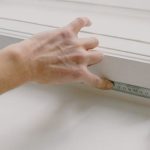Updating an older home for energy efficiency is a wise investment that can lead to significant cost savings over time. Many older homes may lack the modern energy-efficient features found in newer constructions, but with some strategic upgrades, you can make your older home more environmentally friendly and reduce your utility bills. By focusing on key areas such as insulation, windows, appliances, and lighting, you can improve the energy efficiency of your older home without compromising its charm and character.
Evaluate Your Home’s Energy Usage
Before embarking on any energy efficiency upgrades, it’s essential to assess your home’s current energy usage. Conducting an energy audit can help you identify areas where energy is being wasted and determine which upgrades will have the most significant impact. Look for drafts around windows and doors, inspect the insulation in your attic and walls, and check the efficiency of your heating and cooling systems. Understanding where your home is losing energy will guide you in making informed decisions about which upgrades to prioritize.
Upgrade Your Insulation
One of the most effective ways to improve the energy efficiency of an older home is by upgrading its insulation. Poor insulation can lead to significant heat loss in the winter and heat gain in the summer, forcing your heating and cooling systems to work harder to maintain a comfortable temperature. Adding insulation to your attic, walls, and floors can help reduce energy consumption and create a more comfortable living environment. Consider using eco-friendly insulation materials such as cellulose or spray foam to minimize the environmental impact of your upgrades.
Update Your Windows
Old, drafty windows are a common source of energy loss in older homes. Replacing single-pane windows with energy-efficient double or triple-pane windows can help reduce heat transfer and improve insulation. Look for windows with low-emissivity coatings and gas fills to enhance their thermal performance. If replacing all the windows in your home is not feasible, consider adding storm windows or installing window treatments such as thermal curtains to improve insulation and reduce heat loss.
Invest in Energy-Efficient Appliances
Older appliances are often less energy-efficient than their modern counterparts, consuming more electricity and contributing to higher utility bills. Consider replacing older appliances such as refrigerators, washing machines, and dishwashers with Energy Star-rated models that are designed to operate more efficiently. Energy-efficient appliances not only reduce your energy consumption but also help protect the environment by lowering your carbon footprint. Look for appliances with advanced features such as energy-saving modes and smart technology that can help you monitor and control your energy usage.
Upgrade Your Lighting
Traditional incandescent light bulbs are energy hogs that waste electricity and generate excess heat. Replace incandescent bulbs with energy-efficient LED or CFL bulbs to reduce your lighting costs and lower your energy consumption. LED bulbs are long-lasting, environmentally friendly, and available in a variety of color temperatures to suit your lighting needs. Consider installing dimmer switches and motion sensors to further optimize your lighting usage and reduce energy waste.
Create an Energy-Efficient Home
By making strategic upgrades to your older home, you can enhance its energy efficiency, reduce your carbon footprint, and save money on your utility bills. Improving insulation, upgrading windows, investing in energy-efficient appliances, and upgrading your lighting are all effective ways to make your older home more environmentally friendly. By taking steps to update your home for energy efficiency, you can enjoy a more comfortable living space while contributing to a greener, more sustainable future.





